
How to Use ESP-32 DEVKIT-V1 with Expansion Board: Examples, Pinouts, and Specs
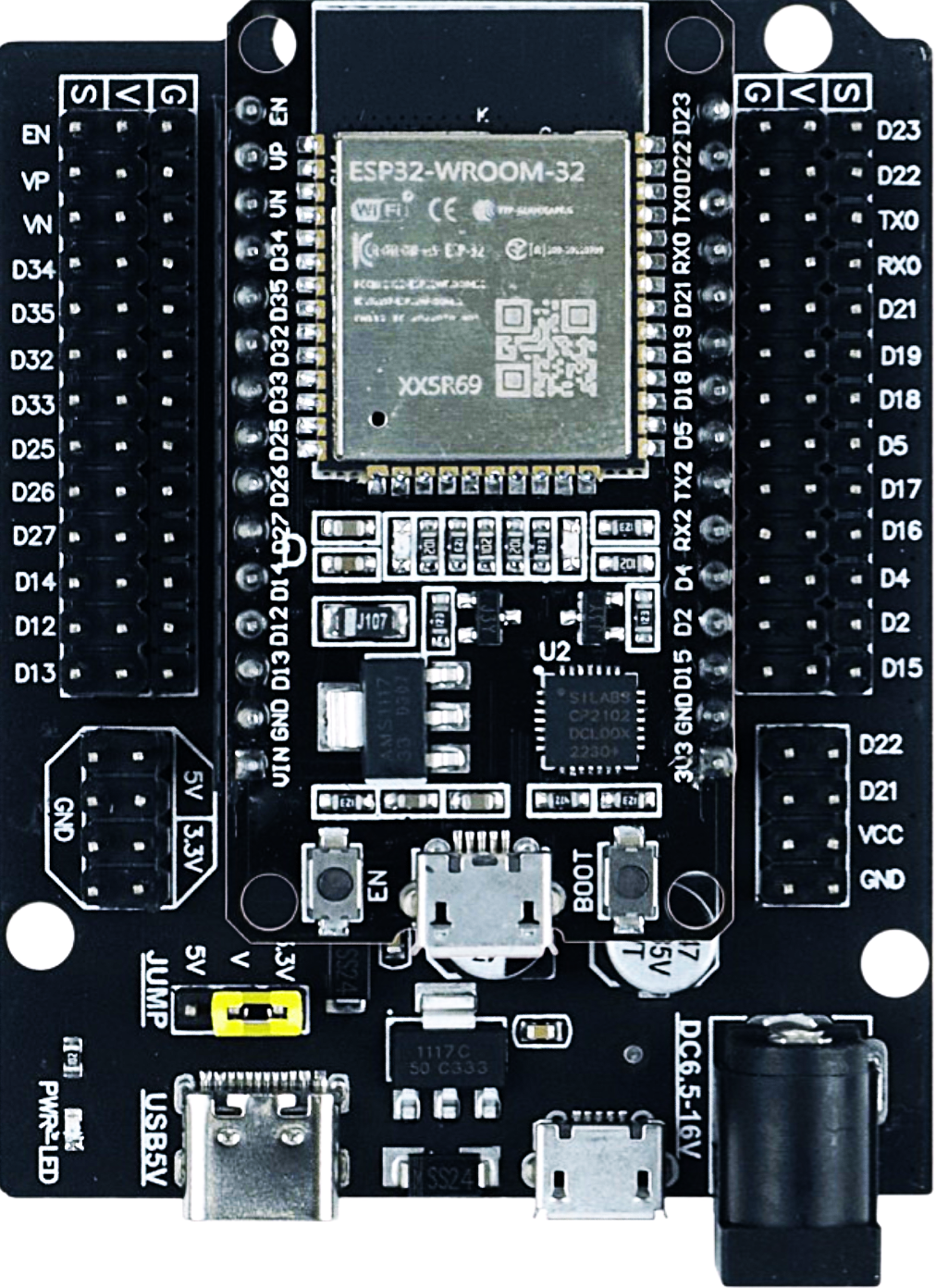
 Design with ESP-32 DEVKIT-V1 with Expansion Board in Cirkit Designer
Design with ESP-32 DEVKIT-V1 with Expansion Board in Cirkit DesignerIntroduction
The ESP-32 DEVKIT-V1 with Expansion Board, manufactured by Espressif, is a versatile development board designed for IoT and embedded applications. It features the powerful ESP32 chip, which integrates Wi-Fi and Bluetooth capabilities, making it ideal for wireless communication projects. The included expansion board provides additional GPIO pins, sensor interfaces, and prototyping options, making it a comprehensive solution for developers.
Explore Projects Built with ESP-32 DEVKIT-V1 with Expansion Board
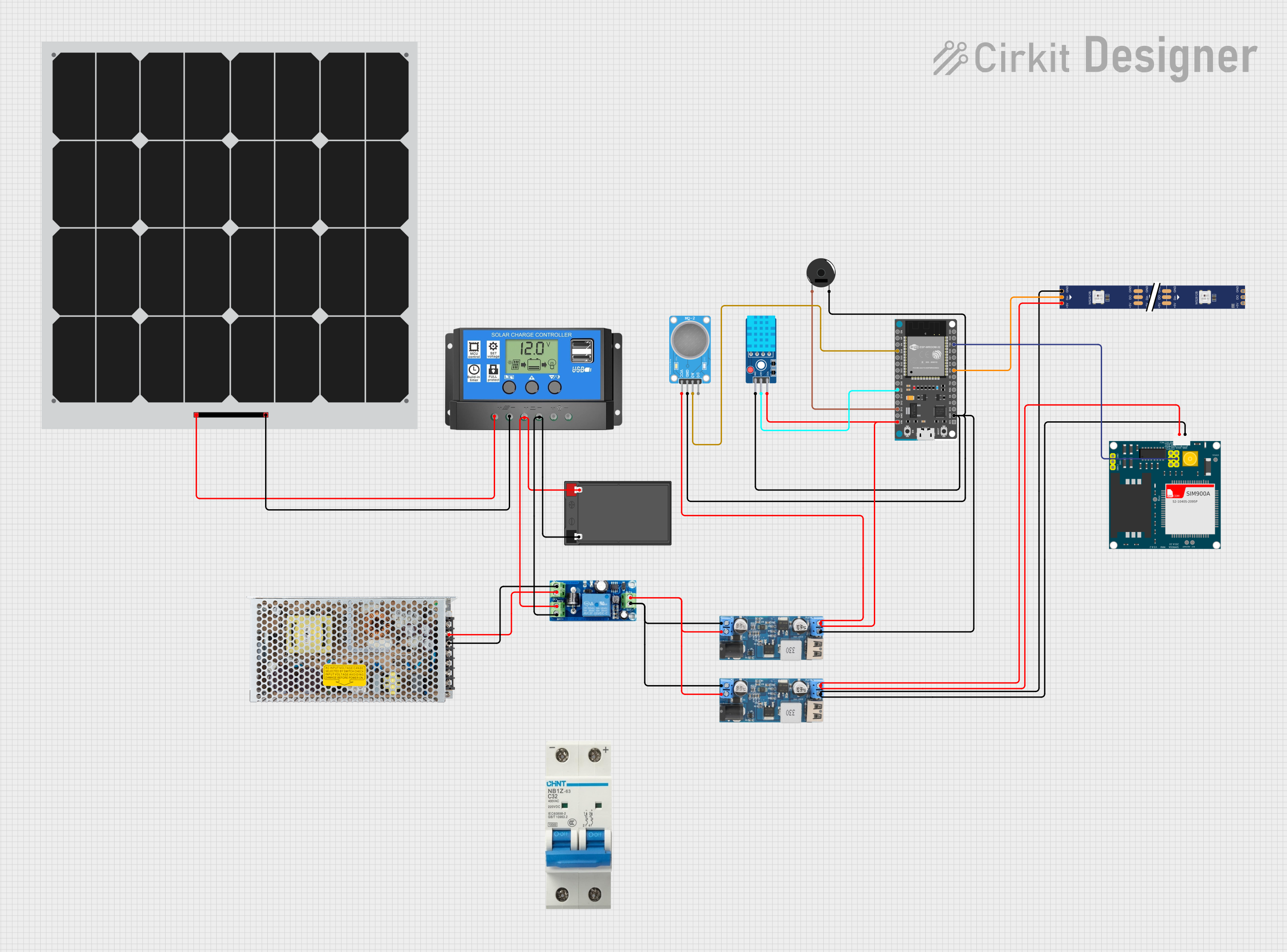
 Open Project in Cirkit Designer
Open Project in Cirkit Designer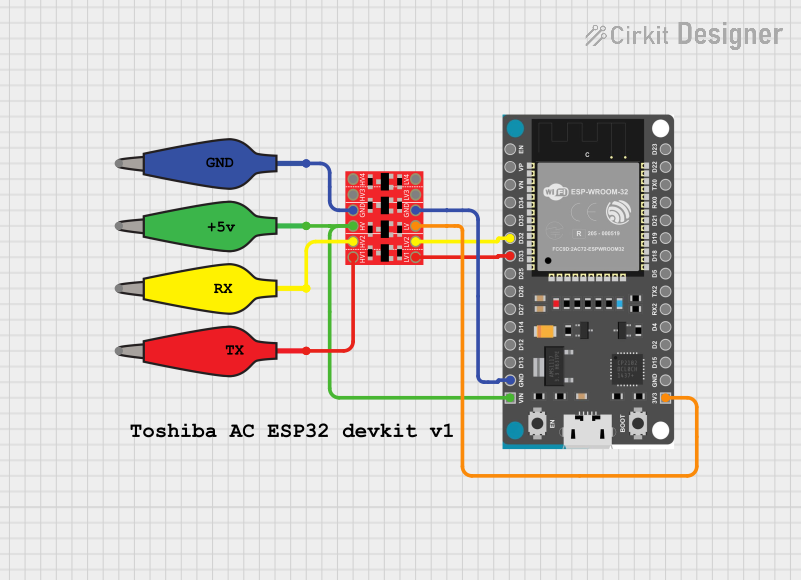
 Open Project in Cirkit Designer
Open Project in Cirkit Designer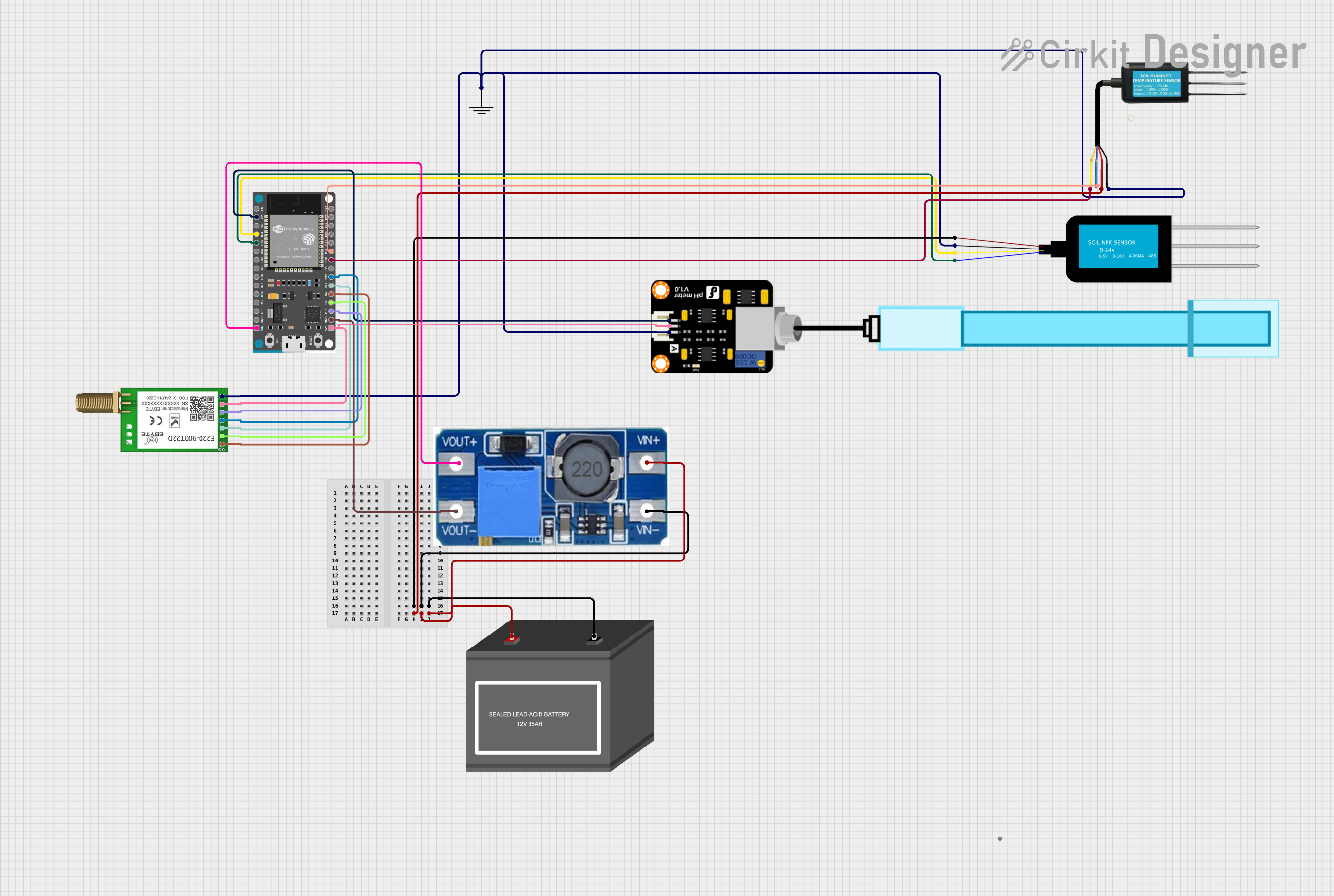
 Open Project in Cirkit Designer
Open Project in Cirkit Designer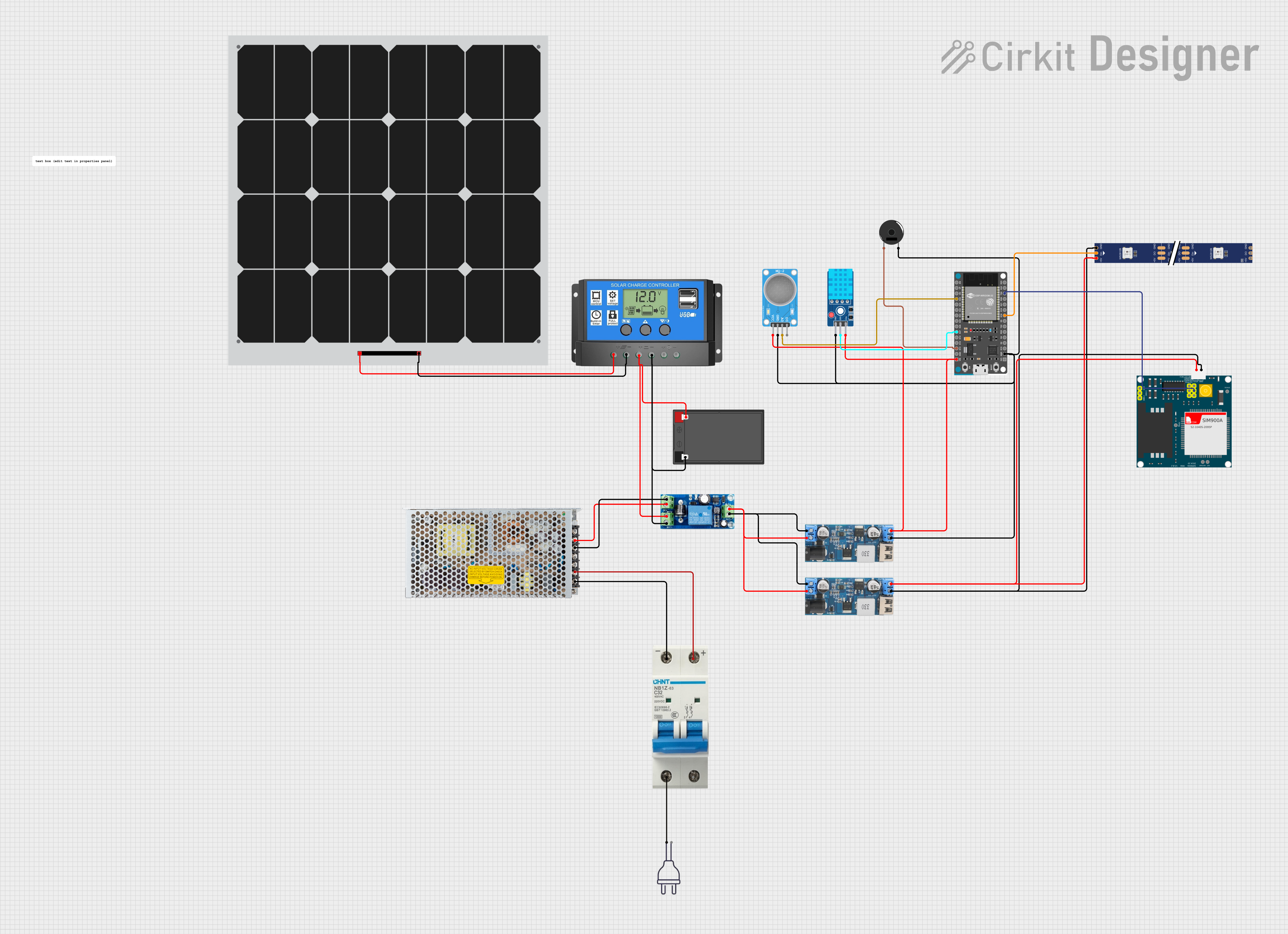
 Open Project in Cirkit Designer
Open Project in Cirkit DesignerExplore Projects Built with ESP-32 DEVKIT-V1 with Expansion Board

 Open Project in Cirkit Designer
Open Project in Cirkit Designer
 Open Project in Cirkit Designer
Open Project in Cirkit Designer
 Open Project in Cirkit Designer
Open Project in Cirkit Designer
 Open Project in Cirkit Designer
Open Project in Cirkit DesignerCommon Applications and Use Cases
- IoT devices and smart home automation
- Wireless sensor networks
- Wearable technology
- Robotics and automation systems
- Prototyping and educational projects
Technical Specifications
Key Technical Details
| Parameter | Specification |
|---|---|
| Microcontroller | ESP32 (dual-core Xtensa LX6 processor) |
| Clock Speed | Up to 240 MHz |
| Flash Memory | 4 MB (varies by model) |
| SRAM | 520 KB |
| Wi-Fi | 802.11 b/g/n |
| Bluetooth | Bluetooth 4.2 and BLE |
| Operating Voltage | 3.3V |
| Input Voltage (VIN) | 5V (via USB or external power supply) |
| GPIO Pins | 30+ (varies with expansion board configuration) |
| ADC Channels | 18 (12-bit resolution) |
| DAC Channels | 2 (8-bit resolution) |
| Communication Interfaces | UART, SPI, I2C, I2S, CAN, PWM |
| Power Consumption | Ultra-low power modes available |
Pin Configuration and Descriptions
ESP-32 DEVKIT-V1 Pinout
| Pin Name | Description |
|---|---|
| VIN | Input power supply (5V) |
| GND | Ground |
| 3V3 | 3.3V output |
| EN | Enable pin (active high) |
| IO0 | GPIO0, used for boot mode selection |
| IO2 | GPIO2, general-purpose I/O |
| IO4 | GPIO4, general-purpose I/O |
| IO5 | GPIO5, general-purpose I/O |
| IO12 | GPIO12, general-purpose I/O |
| IO13 | GPIO13, general-purpose I/O |
| IO14 | GPIO14, general-purpose I/O |
| IO15 | GPIO15, general-purpose I/O |
| IO16 | GPIO16, general-purpose I/O |
| IO17 | GPIO17, general-purpose I/O |
| IO18 | GPIO18, general-purpose I/O |
| IO19 | GPIO19, general-purpose I/O |
| IO21 | GPIO21, general-purpose I/O |
| IO22 | GPIO22, general-purpose I/O |
| IO23 | GPIO23, general-purpose I/O |
| IO25 | GPIO25, general-purpose I/O |
| IO26 | GPIO26, general-purpose I/O |
| IO27 | GPIO27, general-purpose I/O |
| IO32 | GPIO32, general-purpose I/O |
| IO33 | GPIO33, general-purpose I/O |
| IO34 | GPIO34, input-only GPIO |
| IO35 | GPIO35, input-only GPIO |
Expansion Board Pinout
| Pin Name | Description |
|---|---|
| SDA | I2C Data Line |
| SCL | I2C Clock Line |
| RX | UART Receive |
| TX | UART Transmit |
| A0-A5 | Analog input pins (connected to ADC channels) |
| PWM | Pulse Width Modulation output |
| SPI | SPI interface pins (MOSI, MISO, SCK, CS) |
Usage Instructions
How to Use the Component in a Circuit
Powering the Board:
- Connect the board to a 5V power source via the USB port or the VIN pin.
- Ensure the power supply provides sufficient current (at least 500 mA).
Programming the ESP32:
- Install the Arduino IDE and add the ESP32 board package via the Board Manager.
- Select "ESP32 Dev Module" as the board type in the Arduino IDE.
- Connect the board to your computer using a USB cable and select the appropriate COM port.
Connecting Peripherals:
- Use the GPIO pins on the expansion board to connect sensors, actuators, or other peripherals.
- Ensure that the voltage levels of connected devices are compatible with the 3.3V logic of the ESP32.
Uploading Code:
- Write your code in the Arduino IDE or another supported development environment.
- Click the "Upload" button to flash the code to the ESP32.
Important Considerations and Best Practices
- Voltage Levels: The ESP32 operates at 3.3V. Avoid connecting 5V signals directly to GPIO pins.
- Boot Mode: GPIO0 must be pulled low during boot to enter programming mode.
- Power Supply: Use a stable power source to avoid unexpected resets or malfunctions.
- Wi-Fi and Bluetooth: Avoid placing the board near metal objects or enclosures that may interfere with wireless signals.
Example Code for Arduino UNO Integration
// Example: Blink an LED connected to GPIO2 on the ESP32
// Ensure the LED is connected with a current-limiting resistor.
#define LED_PIN 2 // GPIO2 is used for the LED
void setup() {
pinMode(LED_PIN, OUTPUT); // Set GPIO2 as an output pin
}
void loop() {
digitalWrite(LED_PIN, HIGH); // Turn the LED on
delay(1000); // Wait for 1 second
digitalWrite(LED_PIN, LOW); // Turn the LED off
delay(1000); // Wait for 1 second
}
Troubleshooting and FAQs
Common Issues and Solutions
Board Not Detected by Computer:
- Ensure the USB cable is functional and supports data transfer.
- Install the correct USB-to-serial driver for the ESP32.
Code Upload Fails:
- Check that GPIO0 is pulled low during programming.
- Verify the correct COM port and board type are selected in the IDE.
Wi-Fi Connection Issues:
- Ensure the Wi-Fi credentials in your code are correct.
- Check for interference or weak signal strength.
Random Resets or Instability:
- Use a stable power supply with sufficient current capacity.
- Avoid excessive power draw from GPIO pins.
FAQs
Q: Can I use 5V sensors with the ESP32?
A: Yes, but you must use a level shifter to step down the voltage to 3.3V.
Q: How do I reset the board?
A: Press the "EN" button on the board to reset it.
Q: Can I use the ESP32 with MicroPython?
A: Yes, the ESP32 supports MicroPython. Flash the MicroPython firmware to the board to get started.